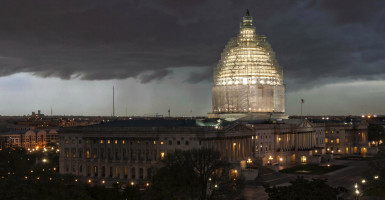The CEO of UnitedHealth Group Inc. recently announced that the company was losing hundreds of millions of dollars by offering qualified health plans (QHPs) in the Obamacare exchanges. As 2015 comes to a close, the insurer will have lost $350 million, and it expects to lose another $500 million by offering health plans on the exchanges next year. This statement by one of America’s largest health insurers follows reports about how more than half of the Obamacare health insurance co-ops have failed.
The fact that Obamacare plans are turning out not to be profitable seems to have taken Washington’s bean counters by surprise. This is best illustrated by estimates produced by the Congressional Budget Office (CBO) and the administration on the Obamacare risk corridor program. As a little background, the risk corridor program is designed to collect payments from insurers who made excess profits—as determined by the federal government—and make payments to insurers with excess losses. If the government didn’t collect enough from profitable insurers to cover the compensatory payments, taxpayers would be stuck paying for the shortfall.
However, according to CBO and the administration, taxpayers would have nothing to fear, as the payments made by profitable insurers would cover any claims made by unprofitable insurers. Specifically, CBO estimated last year that the Obamacare risk corridor program would receive about $1.7 billion in payments from profitable insurers in 2015 (source: CBO’s 2014 August baseline), while the administration estimated that profitable insurers would remit $5.5 billion (source: the president’s fiscal year 2016 budget).
As it turns out, the projections were way off. These projections would have been off by even more if the administration had not made Obamacare’s reinsurance program (another program that reimburses Obamacare plans that cover people with high annual claims) significantly more generous for insurers in 2014.
Last month, the administration told insurers that they had received only $362 million in risk corridor collections but that insurers had requested $2.87 billion in payment from the program. For those interested in knowing just how off the mark the estimates turned out to be, the percentage error of CBO’s estimate is 380 percent, and the administration’s is 1,400 percent.
The reason why CBO’s and the administration’s estimates were so far off is fairly straightforward: They believed that Obamacare plans would be more profitable than they are.
But what is particularly confusing about the estimates is that the government forecasters seem to have ignored data steadily coming in over the last two years. In July 2014, the House Oversight and Government Reform Committee released empirical evidence clearly showing that Obamacare plan enrollees were older and sicker than anticipated and that, based on initial claims data, insurers were expecting about $1 billion in net risk corridor payments for 2014. In May 2015, Standard’s and Poor’s Ratings Services released data suggesting that risk corridor requests would likely exceed payments into the program. And as Brian Blase at the Mercatus Center has pointed out, this is not the only area where CBO and other forecasters have substantially missed the mark.
Fortunately, Congress has seen the writing on the wall. For instance, Sen. Marco Rubio, R-Fla., has been warning since 2013 that the risk corridor program could end up bailing out Obamacare plans. Congress included a provision in the fiscal year 2015 Consolidated and Further Appropriations Act (section 227 of Public Law 113-235) that required the risk corridor program to be budget-neutral for fiscal year 2015.
However, Congress must act again in order to prevent a taxpayer bailout of Obamacare plans. To prevent a bailout, Congress must repeal the risk corridor program in its entirety or maintain budget neutrality until the program ends.




























